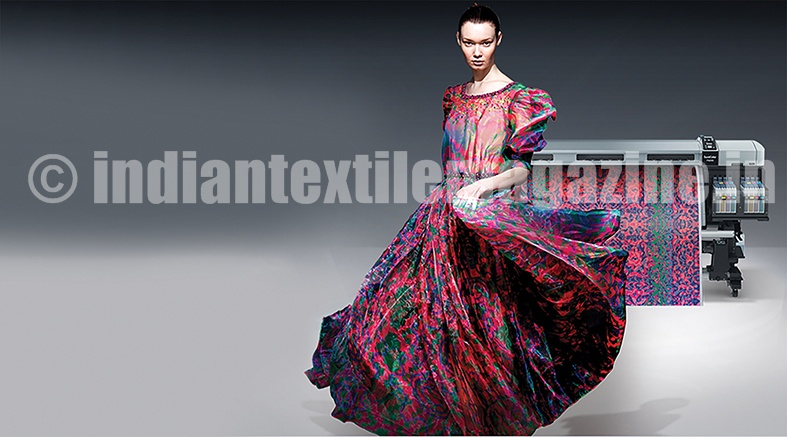SmithersPira has published a report which provides an in-depth, long-term assessment of the rapidly evolving market for the print technology.
An estimated total of around 384 million square metres of fabric were printed digitally via dye sublimation in the year to Q1 2016, having grown by just under 18.4 per cent in 2015-16. This is set to rise to 892 million sq. metres in 2021.
The four major end-use segments are garments; household (carpets, wall coverings and upholstery); technical and visual communications (displays and signage); and technical textiles. This last category includes automotive (seats, seat-belts, seat head lining, panels, sound absorption), bags, medical and scientific textiles, sails, tents, parasols/umbrellas, accessories and sports equipment.
The garments segment is the largest end-use sector, with 75 per cent of the market share by value in 2016. The other segments each take 5-10 per cent of the market. “What is driving the market, in very basic terms, is the increasing demand for rapid customisation to create beautiful, unique clothing or household products,” said Dr. J.D. Hayward, the author of the report. “This is more and more made possible by digital printing technology. In turn, printers must turn around the production and delivery of dye sublimation products ever more quickly to meet this demand.”
Applications of digital dye sublimation textile printing include, in order of run length: unique one-offs, sampling, micro-runs, short production runs and increasingly long bulk production runs in the multiple thousands of linear metres. This last is the new battleground with the conventional analogue textile print, which dye sublimation is looking to disrupt with a new generation of high-productivity presses.
Dye sublimation specific machine annual revenues amount to a total of €279 million ($304 million) to Q1 2016. Dye sublimation inks revenues amount to a total of around €259 million to end Q1 2016. Globally, digital textile printing output grew at more than 45 per cent annually between 2004 and 2009 from a low base.
From 2009, growth slowed somewhat, in part due to the fact that the near-exponential growth rates of early years could not be sustained as the market became more mature, but also because of the global economic slowdown.
Dye sublimation digital printing was nascent in the period 2004-9. The sublimation dye market attracted attention as it was clearly growing rapidly between 2011 and 2015, in some countries at over 50 per cent per year from a low base.
The market participants collectively now predict a lower rate of growth going ahead to 2021, but at 18.4 per cent CAGR, dye sublimation continues to be an appealing fast-growing market that will more than double in terms of volume printed and value over the study period.
In terms of regional markets, Asia, including Turkey, has and will continue to have the strongest growth. Conversely, the highest per unit price will continue to be seen in North America and Western Europe.
The Future of Dye-Sublimation Printing to 2021 provides data and an exclusive analysis designed for organisations in all phases in the value chain looking to capitalise on opportunities in this booming segment.
It examines global and key regional markets for dye sublimation print, which is contextualised with analysis of the state-of-the-art in dye sublimation printing and expert analysis of the technical and market drivers that are fuelling growth.
Scope for digital textile printing expansion
It is no longer a secret that textile printing is one of the biggest growth sectors of the industry, with many diversifying into this market. And, with the growing competition in the busy market, companies are looking for ways to pull ahead and acquire more business. One way of doing this is ensuring availability of the best possible technology in order to produce high-quality products for customers.
Much has been said and written about the advantages of using dye sublimation in textile print, with many of those companies in the sector having opted for this technology.
The specialist FESPA Textile in-event sector of the show played host to some of the major players in the dye sublimation market, all keen to demonstrate how their solutions can help companies move ahead of the competition. In addition, manufacturers set up shop in other areas of the show in order to take advantage of the expected heavy footfall.
Digital textile printing may involve a lot of different techniques than the traditional processes most print companies are used to. If such printers are able to master these technologies, there is plenty of business to be won.
